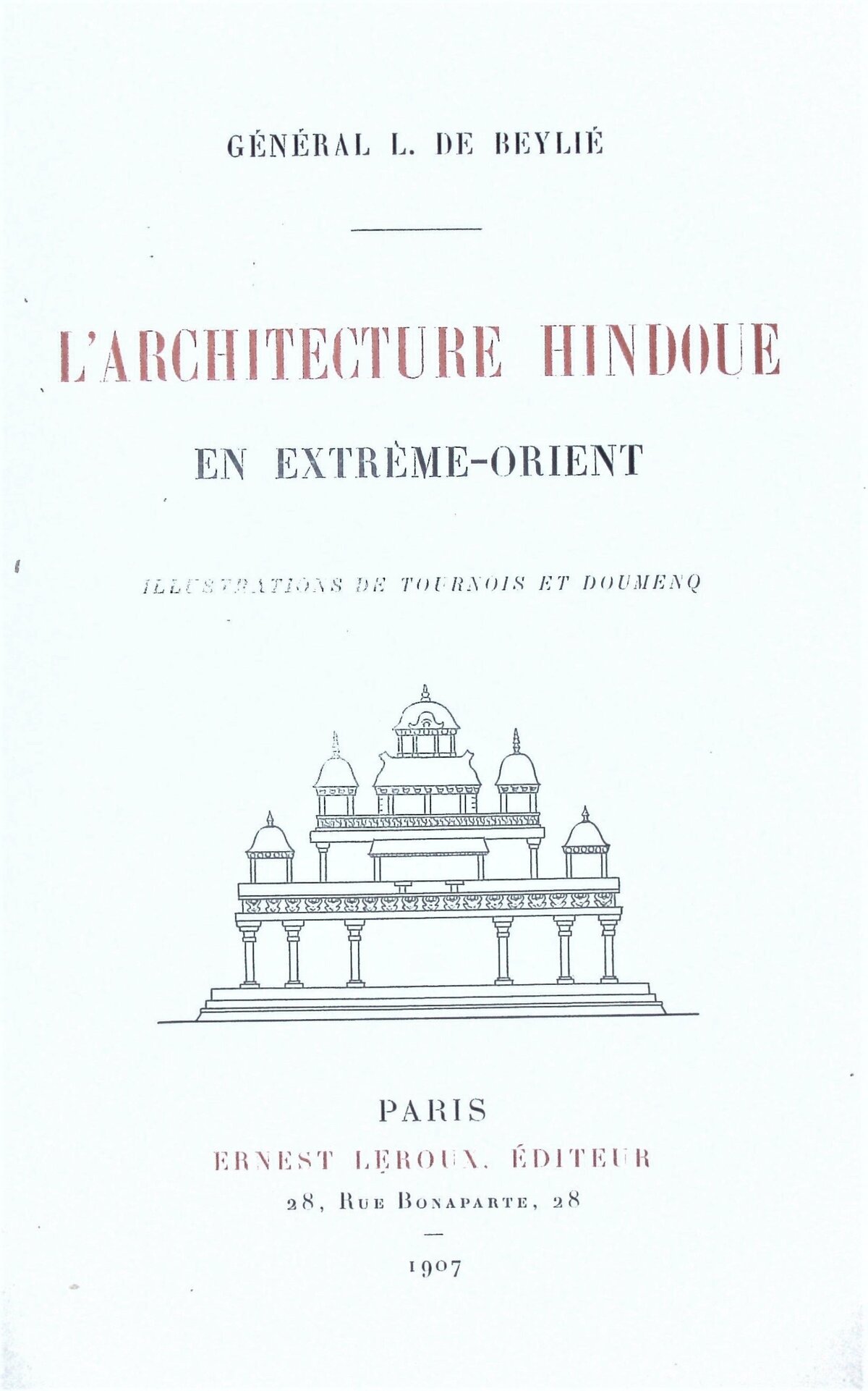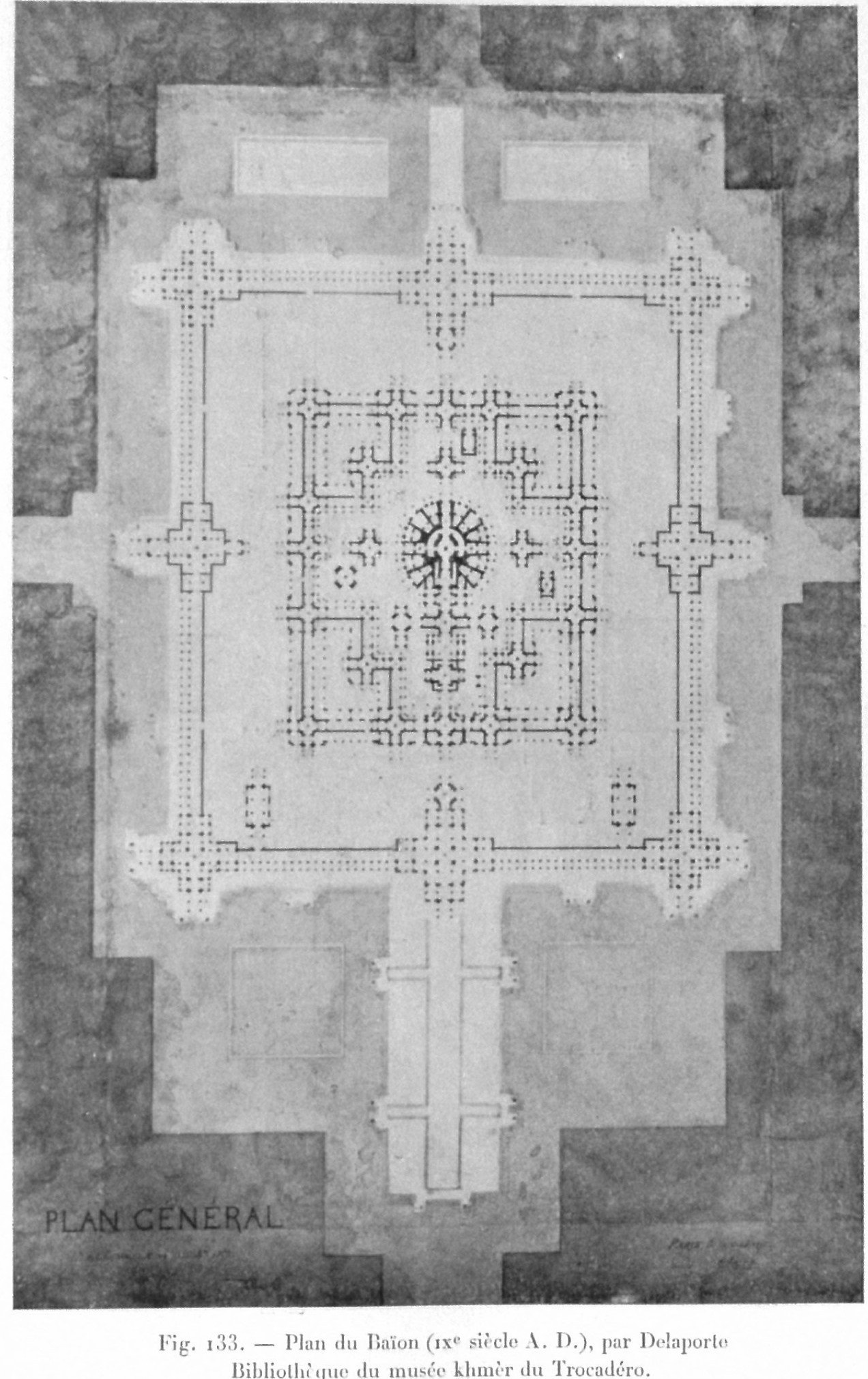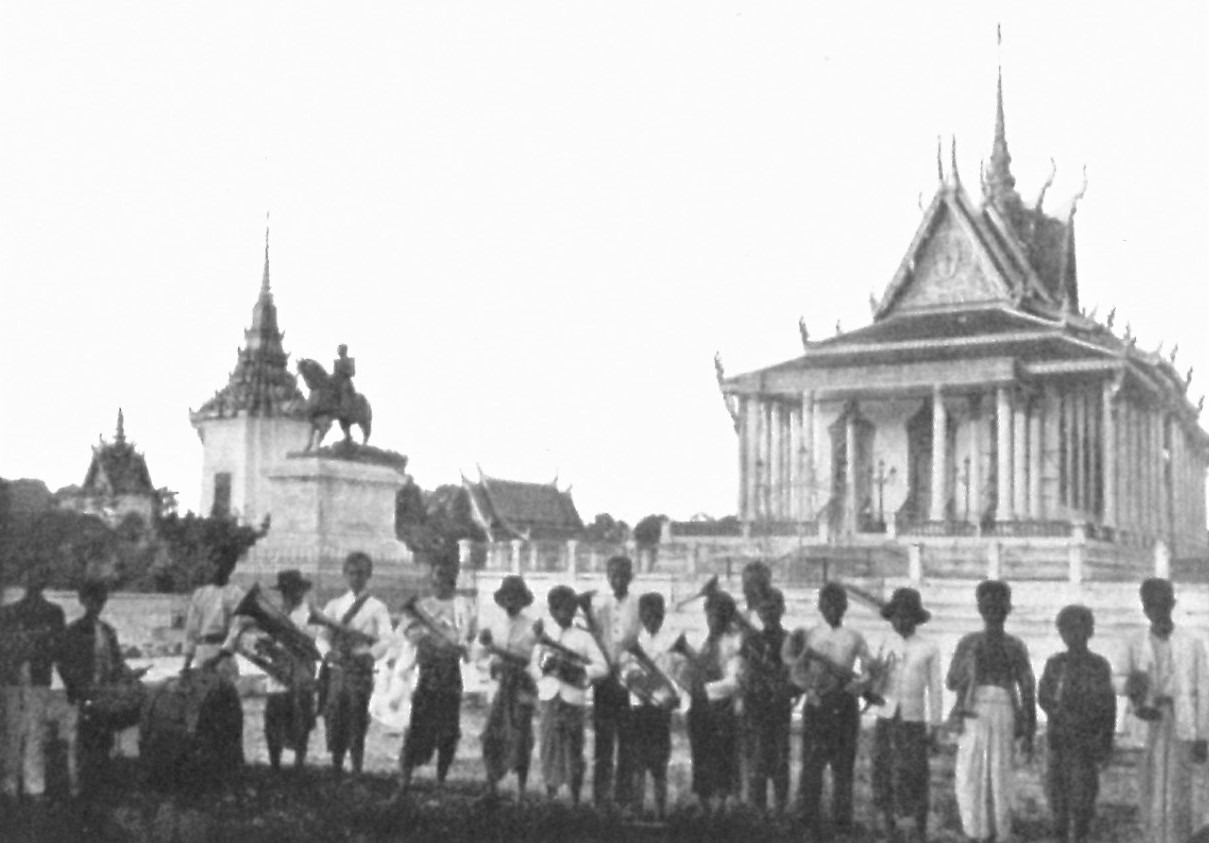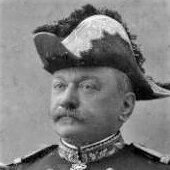L'architecture hindoue en Extreme-Orient | Hindu Architecture in the Far East
by Léon Marie-Eugène de Beylié
Archeological, architectural and historical sum on Indic influences in Southeast Asia.

Type: hardback
Publisher: Ernest Leroux, Paris, 28 rue Bonaparte
Edition: First Edition
Published: 1906
Author: Léon Marie-Eugène de Beylié
Pages: 416
Language : French
This richly illustrated study reflects three intense years (1903-1906) of archeological and architectural prospection by French General de Beylié, covering Khmer (first chapter after India), Cham, Siamese, Burmese, Javanese and Balinese religious and palatial edifices.
Regarding Angkorean temples, the author compared notes with eminent explorers and researchers, in particular L. Delaporte and L. Finot.

In Appendix, the author has included some Notes on the History of Pagan (Précis de l'histoire de Pagan) by Prof. Charles Duroiselle.
 Phnom Penh Royal Palace at the end of 19th century. Photo Antonio (de Beylié 1907)
Phnom Penh Royal Palace at the end of 19th century. Photo Antonio (de Beylié 1907)
NOTE: A scan-pdf version of the book (Angkor Database Documents) is available. Please enquire by email.
Tags: Khmer architecture, Indian influences, Mon-Khmer, Mon, Cham civilization, Siam, Burma, archaeology
About the Author

Léon Marie-Eugène de Beylié
General Léon de Beylié (1840, Strasbourg - 1910, Tha Dua Pass, Laos) was a French colonial military officer as well as a tireless archeologist and collector of Islamic, Byzantine, Hindu and Buddhist art. His sum on Hinduist architecture (L'Architecture Hindoue, Paris, 1907) includes important contributions on Khmer and Cham architecture.
A graduate from Saint-Cyr Military Academy, de Beylié took part in military campaigns in North Africa, Central Asia, Madagascar, and did no less than five tours in Cochinchina. While sending back to France many pieces of furniture, weapons, statues and various collectibles -- all donated to the Museum-Library of Grenoble, where he had spent his childhood, some 2,000 items gathered in "Salle Léon de Beylié" --, he took extensive notes during archeological explorations.
Not unlike British Major-General Sir Alexander Cunningham (1813-1894), author of the Archaeological Survey of India, General de Beylié managed to combine his military career with a passion for ancient civilizations, traveling on his own account to Burma, China, Japan, Java. His explorations of Banteai Chmar and Beng Maelea Temples in Cambodia were praised by the Commission Archéologique de l'Indochine and the École Française d'Extrême Orient. He dedicated his book to Louis Finot, then EFEO Director in Indochina, and the latter wrote de Beylié's obituary, here.
General de Beylié perished while attempting to go through the dangerous pass of Tha Dua (modern Laos) while navigating the Mekong River on a small steamer. His remains were interred in Grenoble during an official funeral on Sept. 17, 1911.
